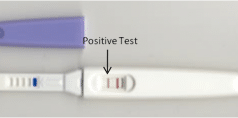
It’s the news no one wants to hear—you need surgery, but you don’t have adequate insurance. What will you do?
Staying healthy is one of the most important things in life, so we can’t neglect medical care. But how do you pay for medical appointments or surgery without insurance?
Luckily, there are a few ways you can still get the treatment you need. Keep reading to find five key ways to pay for surgery, even if you’re not insured.
1. Shop Around
Surgery can be an expensive process, so don’t be afraid to shop around. When wondering how to pay for surgery, you should call several specialists or doctors, as prices can vary wildly even in the same city.
For example, research in San Francisco showed that the cost for an MRI ranged from $475 to $6,221. With prices so different, you can save a lot of money by seeking a second or third opinion.
2. Ask Doctor for a Payment Plan
How to pay for medical bills? Try asking your doctor if they will accept a payment plan, allowing you to pay a small amount each month.
Many doctors understand that large upfront costs are impossible for many people, so are willing to offer an easier way for you to pay. While you may pay slightly more in interest over time, at least it allows you to have your needed surgery.
3. Travel Overseas
Increasingly, Americans are heading overseas to have medical procedures done in foreign countries. This is especially true for dental procedures, which run in the tens of thousands but can be done in countries like Thailand for a fraction of the cost.
If you go down this route, do plenty of research to ensure you find a medical facility that operates to high standards.
4. Take Out a Loan
Surgery funding can be challenging, so sometimes the best option is to take out a personal loan, or an advance on your credit card.
Talk to your bank or lender about financing options. Unsecured loans, which don’t require collateral, can be good options, but pay attention to the interest rate.
5. Use Your Existing Assets
If you have assets, like a home, you may be able to use them to help fund surgery. Your home’s equity or your 401K may be able to be used as payment in an emergency.
Or, it may be better to tap into your savings account and just pay for the surgery upfront. If you’re unsure about which option is best for you, you may want to talk to your financial advisor or bank for advice.
Use These Tips to Pay for Surgery without Insurance
Paying for surgery without insurance can be a stressful time, especially if the cost came up unexpectedly. However, you can use the tips above to work out the best possible way to pay for your procedure.
In the future, you may want to see if there are any healthcare plans you can qualify for or affordable insurance options. This could be through your employer, your partner, or a government plan—that way, you hopefully won’t have to pay next time you need surgery.
Was this article useful? If so, please browse some of our additional content to learn more.








